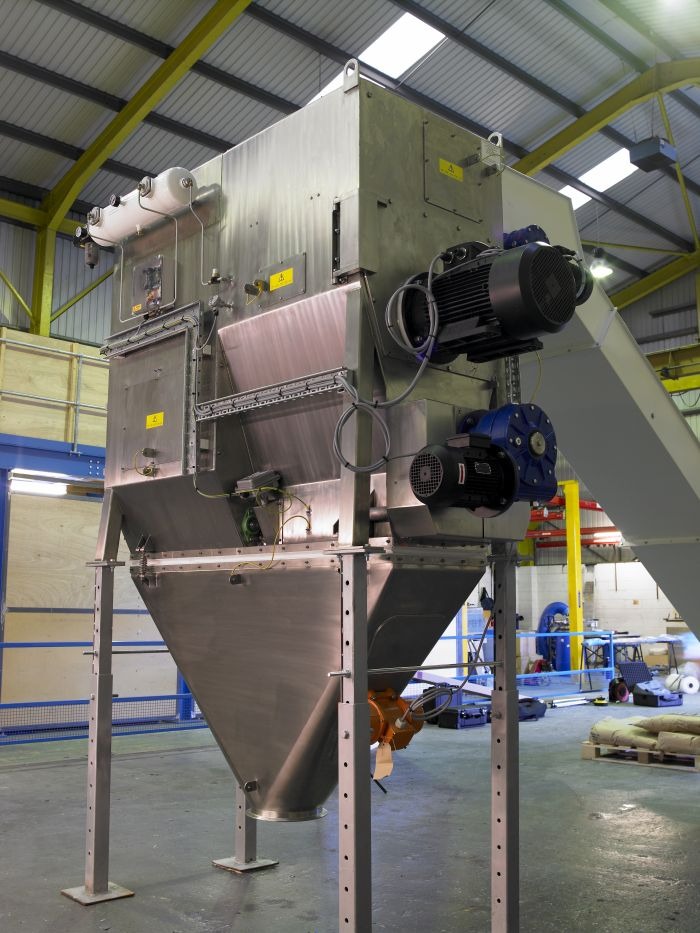As industries evolve, so do the challenges associated with manual handling. Ergonomics in material handling plays a crucial role in addressing these challenges. Here at Palamatic, our 35+ years of industry experience means that we recognise both the importance of ergonomics in material handling and the challenges associated with manual handling. As experts in developing ergonomic material handling solutions, our innovations help make inefficient manual handling a thing of the past.
Material Handling Vs Manual Handling
What is Material Handling?
Material handling involves the movement, protection, storage, and control of materials and products throughout manufacturing, warehousing, distribution, consumption and disposal processes. This includes a wide range of activities such as lifting, moving, carrying, pushing and pulling materials, whether they are raw materials, semi-finished goods, or finished products. Effective material handling improves efficiency, reduces handling costs, and ensures timely delivery of materials.
Key Aspects of Material Handling Include:
- Transportation: Moving materials from one location to another within a facility.
- Storage: Keeping materials in a designated area until they are needed.
- Control: Managing the flow of materials to ensure they are available when and where needed.
- Protection: Ensuring materials are not damaged during handling and storage.
Material handling is a critical component of the supply chain and impacts the efficiency and productivity of manufacturing and distribution operations.
What is Manual Handling?
Manual handling refers to any process that requires a person to lift, lower, fill, empty, or carry loads. This can include activities such as lifting boxes, carrying sacks, stacking pallets and moving heavy equipment. Manual handling challenges can be physically demanding and, if not performed correctly, can lead to injuries, particularly musculoskeletal disorders (MSDs) such as back pain and strains.
Common manual handling tasks include:
- Lifting and carrying: Moving items by hand or with basic tools.
- Pushing and pulling: Using force to move items on wheels or other surfaces.
- Holding or restraining: Keeping items in position during a process.
Proper ergonomic manual handling techniques and the use of ergonomic equipment are essential to prevent injuries and ensure the safety and well-being of workers.

The Importance of Ergonomics in Material Handling
Ergonomics and material handling aim to optimise the interaction between workers and their tasks, tools and environments. Material handling involves designing equipment and processes that reduce physical strain, prevent injuries and enhance productivity. Poor ergonomic practices can lead to injury, decreased efficiency and increased absenteeism, all of which negatively impact the bottom line.
Common Manual Handling Challenges
- Repetitive Lifting and Carrying: Frequent lifting and carrying of heavy materials can lead to chronic back pain and other musculoskeletal issues.
- Awkward Postures: Tasks that require bending, twisting or reaching can strain muscles and joints.
- Heavy Loads: Handling heavy loads without proper equipment can cause acute injuries and long-term health problems.
- Fatigue: Repeated manual handling tasks can lead to worker fatigue, reducing productivity and increasing the likelihood of errors and accidents.
- Varying Material Types: Different materials require different handling techniques, making it challenging to maintain consistent ergonomic practices.



Our Ergonomic Solutions for Material Handling
Industrial Vacuum Lifters
Our Industrial vacuum lifters revolutionise material handling by easing the lifting of items like sacks, panels and drums, handling up to 350kg. These systems enhance safety and productivity by reducing worker strain and meet rigorous safety standards with ATEX and GMP compliance.
Hygienic Stainless Steel Vacuum Lifters
Ideal for industries requiring high hygiene standards, Palamatic’s Hygienic Stainless Steel Vacuum Lifters use FDA-compliant materials and special filtration systems. These lifters ensure the safe handling of sensitive materials, reducing contamination risk and maintaining product integrity.
Crane Systems
Palamatic’s crane systems, made from lightweight aluminium or heavy-duty mild steel, facilitate the handling of larger work areas and heavier loads with minimal maintenance. These ergonomic systems support vacuum lifters, enabling easy movement and reducing manual lifting needs.
Dust-Free Sack Opening Systems
Palamatic’s Dust-Free Sack Opening Systems address dust and contamination issues when handling raw material sacks. These COSHH-compliant systems, capable of opening up to 15 sacks per minute, protect operators from dust exposure and improve operational efficiency.
Custom Design and Solution Services
Palamatic offers bespoke material handling solutions tailored to specific industry needs. These custom designs focus on efficiency, safety and ergonomics, ensuring equipment and processes align with operational demands, reducing ergonomic risks and optimising productivity.


The Impact of Ergonomics on Productivity and Safety
Implementing ergonomic approaches to material handling has far-reaching benefits:
- Injury Prevention: By minimising physical strain and awkward postures, ergonomic solutions prevent workplace injuries, reducing healthcare costs and downtime.
- Enhanced Productivity: Ergonomic equipment and processes streamline material handling tasks, enabling workers to perform their duties more efficiently and with less fatigue.
- Improved Worker Morale: A safer and more comfortable work environment boosts worker morale, leading to higher job satisfaction and retention rates.
- Regulatory Compliance: Ergonomic solutions help businesses comply with health and safety regulations, avoiding fines and legal issues.
Trust Palamatic for Quality Ergonomic Material Handling Solutions
Ergonomics in material handling isn’t just a matter of compliance; it’s a strategic approach to improving workplace safety, efficiency and overall productivity. By investing in ergonomic equipment and practices, businesses can protect their workforce, enhance operational efficiency and ultimately achieve greater success in their respective industries.
For more information on ergonomic approaches to material handling, browse our material handling products, or get in touch with us today.

